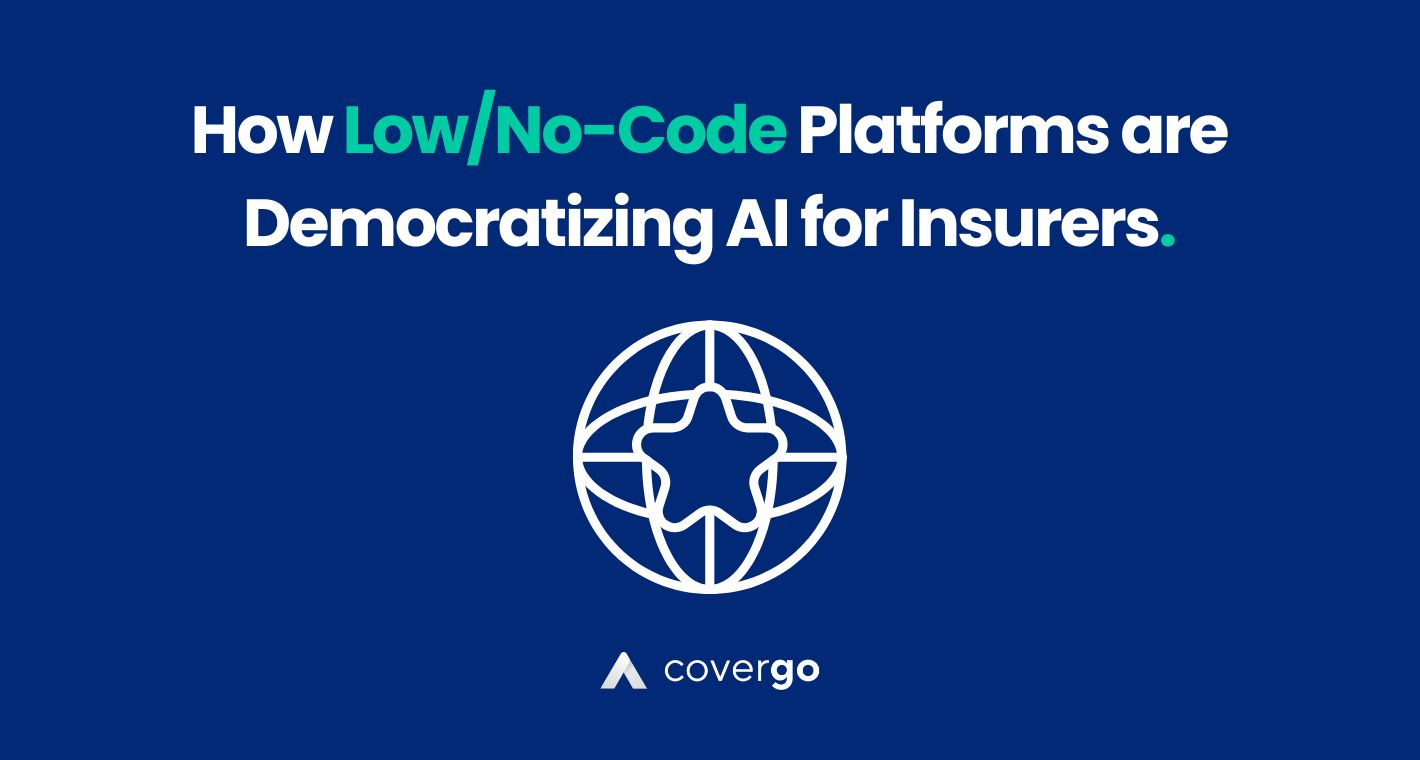According to research conducted by Willis Towers Watson, the third largest insurance broker globally, by leveraging predictive analytics, 67% of insurers have been able to reduce policy issuance and underwriting expenses and 60% of insurers have been able to increase sales and profitability.
With society becoming increasingly digitized and the Internet of Things, or IoT, rapidly expanding, there is a plethora of data sources to choose from today. The rate of software innovation means that analytics tools are only becoming more and more advanced, and are able to ingest these varied data types efficiently.
The big winner is the insurer, who can use these modern predictive analytics tools to make sense of this array of data, ultimately improving their understanding of and ability to predict their insureds’ behavior.
For example, P&C insurers are now collecting data from telematics, interactions with agents, interactions with customers, smart homes and the smart/IoT devices within them, and social media to better understand their customers’ lives and risk factors, improving claims management, underwriting decisions, and product development.
A related tool in insurance is predictive modeling, most often employed in the form of “what-if” modeling, which provides insurers with the ability to simulate various business scenarios. This allows insurers to evaluate the impact of an adverse event on their overall book of business..
COVID-19 has demonstrated to insurers that staying in front of change as much as possible is pivotal, and when employed correctly, “what-if” modeling can be a powerful tool to inform accurate changes in underwriting (ie. rate changes) and product design, and claims processing and management.
In an increasingly data-driven context, predictive analytics is changing the P&C insurance world in 13 impactful ways in 2024.
1. Pricing and assessing risk better
While it’s a well-documented use case of predictive analytics in insurance, pricing and risk selection have seen a marked improvement in 2024 in large part due to the availability of improved data insights. With the increased variety of data sources and higher levels of data fidelity and quality, the information insurance companies are collecting is more actionable, driving better decisions and outcomes.
As mentioned above, the data being collected now – sources like social media, smart devices, and agents’ direct interactions with customers – is more valuable because it is recorded directly from insureds. Data that isn’t being gathered from indirect sources (common examples are criminal records and credit histories) does not require interpretation to understand insureds’ behavior because insurers are receiving it directly (e.g. from social media).
More relevant data sources lead to more accurate insights, which in turn is empowering the engine of predictive analytics to deliver better outcomes in the form of improved pricing and risk selection. The rate of data collection from smart devices by insurers is growing rapidly (reported to be approximately 10 MB of data per household per day).
2. Identifying cancellation risks early
For insurers (and also brokers for that matter), the most important dates in the year are when the majority of policies are up for renewal, the biggest of which is January 1 followed by the first day of the remaining quarters of the year (April 1, July 1, October 1). For large customer accounts, multiple policies will share the same renewal (and expiration) date, so it is crucial for the health of the business that these customers stay with the insurer.
Acquiring new customers is important, but another key to success is keeping a high percentage of your existing customers on board. Assuming costs are steady, that is how you sustainably grow an insurance business.
Thus, insurers worry a lot about negotiating these renewal dates successfully and want to have as much advance warning as possible on the customers that may be looking to move their business elsewhere. That way, there is enough time to convince these clients to renew their policies.
Predictive analytics is playing an integral role in identifying the customers who are most likely to cancel or lower coverage and thus require special attention in order to secure the renewal of coverage. Thanks to more advanced data insights, insurers are having increasing success identifying customers who may be unhappy with their existing coverage and would thus be more likely to switch to a competitor during the upcoming renewal cycle early.
With more time for action thanks to early identification of cancellation risk, insurers are better able to maintain their books of business.
3. Forecasting fraud risk
Insurance companies are in a constant battle against fraud. According to The Coalition of Insurance Fraud, in the United States alone, $80 billion is lost annually from fraudulent claims. For insurers in the United States and Canada, anywhere between 5 and 10% of claims costs are attributable to fraud.
Predictive analytics is a powerful weapon against claims fraud. Insurers can identify and prevent potential fraud before it happens and even have the ability to take corrective action retroactively. Once again, insurers are turning to social media as it is also a great place to look for signs of fraudulent behavior. Even after claims have been settled, insured’s online presence is being monitored for suspicious activity that may be indicative that fraud has been perpetrated.
The use case of predictive modeling for fraud detection is clear. According to SmartDataCollective, “[where] humans fail, big data and predictive modeling can identify mismatches between the insured party, third parties involved in the claim (e.g. repair shops) and even the insured party’s social medical accounts and online activity”.
4. Intelligently prioritizing claims
In a modern society where information is at your fingertips and instant gratification is the order of the day, customers are looking for rapid, yet personalized, service more than ever. The details may change, but no matter the industry, making this a reality is always a challenge.
Nowadays, thanks to cutting-edge predictive analytics, insurers are indeed making good on this task. Predictive analytics is informing insurers on which claims to prioritize and when saving time and money while improving customer satisfaction and retention in the process.
Given the ability to forecast claims data, insurers employing predictive analytics command a strategic advantage through an unrivaled ability to tighten budgets weeks and months ahead.
5. Doubling down on customer loyalty
No matter the industry, no matter the product, brand loyalty is everything. Nowadays, insurers can use predictive analytics to analyze historical patterns of behavior of their loyal customers and anticipate what their future needs might be.
In most markets, for many P&C lines, especially the most standardized products, pricing, and product offerings are extremely competitive across many insurance companies, and brand loyalty becomes a huge trump card.
Insurers are utilizing information revealed by historical customer data to proactively optimize processes and products for the core of their customer base, helping them to strengthen brand loyalty proactively.
6. Placing outlier claims under the microscope
Increasingly, insurance companies are employing predictive analytics to help identify claims that unexpectedly become large losses, otherwise known as outlier claims. With state-of-the-art analytics tools, insurers are analyzing previous claims for similarities, and once identified, automating alerts to claims specialists to ensure special care is taken with these claims.
Predictive analytics tools provide insurers with advanced notice of potential losses and the related complications, helping them to reduce the frequency of outlier claims and the resulting detrimental financial impacts.
7. Reworking claims processing
With predictive analytics, insurers are varied data sets to determine the true course and nature of events, which therefore affects claims outcomes. Using a data-driven method as much as possible has streamlined the process and helped the claims department to reduce risk of human error.
Equally, thanks to the availability of historical data through predictive analytics tools, insurers are analyzing past claims processes and improving their efficiency, as well as continuously iterating documentation on best practices in claims.
8. Ensuring effective data management practices
In the course of conducting business, insurers generate and collect a massive amount of data. For many years, this data was woefully underutilized, both due to ignorance of the possibilities of data-driven insights and insufficiently advanced technology to parse its complexity and harness it effectively.
Thanks to modern technology and greater awareness of the value of data today, neither of these issues is holding back the insurance industry any longer, and predictive analytics is helping insurers make the most of their data, whether it be more accurately predicting customer behavior or reducing inefficiencies in the underwriting process.
However, insurers can only extract insights from their data with excellent data cleaning, preparation, and management. If data is scattered across a siloed architecture, it becomes difficult to properly clean it and systematically organize it in data warehouses.
Without a unified approach to system architecture and data management policy, the fidelity of data is lost, and predictive analytics isn’t possible.
9. Leveraging data modeling
Once effective data management procedures are in place, insurers can start to leverage the capabilities of data modeling for business growth.
Data modeling enables insurers to construct robust knowledge bases on their customers, and in turn quantify customer profitability through the identification of likely cross-sell and upsell opportunities, which are based on the unique characteristics of the customer.
Informed by powerful data models – the result of intelligently putting together data-driven insights made possible by effective data management – insurers are able to deliver tailored solutions to their customers at scale and on-demand in the cloud.
10. Discovering new growth markets
Predictive analytics can help insurers uncover new markets or better target existing markets it serves. Through data analysis, insurers can learn demographics and key patterns of behavior, enabling them to precisely tailor marketing efforts.
In a social media age, where 3.2 billion people use social media globally, the rise of influencer marketing and other types of social media marketing are increasingly important to holistic marketing strategies.
11. Building a deeper understanding of the customer
According to TechTarget, the 360-degree view is “the idea that companies can get a complete view of customers by aggregating data from the various touch points that a customer may use to contact a company to purchase products and receive service and support.” Through predictive analytics, insurers are able to pull together data and insights from multiple sources to inform a complete understanding of their customers.
Prior to the rise of predictive analytics, insurers could only extrapolate the profile of the average customer from a basic set of information (e.g. demographics), which resulted in largely misunderstood customers and suboptimal revenues. Today, the opposite is true thanks to the use of predictive analytics tools in insurance.
12. Providing a personalized user experience
Whether shopping for a suit or insurance, customers are seeking a tailored experience curated especially for them. Insurers are using the actionable insights generated by predictive analytics to come up with a far better understanding of their customers, and how best to serve them in an online world.
Philosophies like the 360-degree view help to precisely detail the profile of customers, allowing insurers to then customize the end-to-end user experience from products and pricing to policy servicing and claims settlement.
Such personalization ultimately makes it far more likely that the customer buys insurance from them, and by serving customers so well, referral business also increases dramatically, lightening the load on marketing efforts and reducing campaign spend.
13. Hyper-customizing the product
At the core of a personalized user experience are products truly customized to each individual customer in the small details. In the past, this simply wasn’t feasible at scale with the legacy technology utilized by insurers, but with ever increasing amounts of IoT data available and recent leaps in machine learning and artificial intelligence, true product customization is now possible.
Leveraging the latest advances in machine learning technology, insurers are utilizing predictive analytics on customer behavior, buying preferences and pricing sensitivity to offer the most relevant insurance products to their customers at scale.
14. Cutting costs
Put simply, predictive analytics is a tool empowering insurers to make better decisions. These decisions lead to actions that are ultimately driving better outcomes, and over time, those original insights no longer retain their novelty – because they have already been filtered down into existing processes.
Of course, then the next batch of insights is delivered through predictive analytics, and once the next set of winning actions emerges, the cycle repeats itself. Previous insights become the backbone of current processes.
Not just any processes – better, more efficient processes. Ones that reduce costs, and increase the bottom line. It’s that simple. That’s the power of predictive analytics.
15. Reaching customers where they are
Predictive analytics is a powerful tool that enables insurers to effectively utilize digital distribution channels and connect with customers on platforms they frequently use. By leveraging advanced data analysis techniques, insurers can gain valuable insights into customer behavior, preferences, and needs. This information allows insurers to segment their customer base and tailor their digital distribution strategies accordingly.
Predictive analytics helps insurers identify the most suitable digital channels for reaching their target audience, ensuring that resources are allocated effectively. Furthermore, by analyzing historical data and patterns, insurers can create personalized marketing campaigns and offers, increasing the likelihood of converting leads into customers.
Predictive analytics also assists insurers in accurately assessing risk and determining appropriate pricing strategies. By analyzing vast amounts of data, insurers can create predictive models that evaluate potential risks associated with customers. This enables insurers to communicate precise pricing information through digital channels.
Moreover, predictive analytics helps insurers identify early warning signs of customer churn and implement proactive retention strategies. By analyzing customer interactions and behavioral patterns, insurers can identify customers at risk of leaving and intervene with personalized retention efforts delivered through digital channels.
Finally, through continuous analysis of key performance indicators, insurers can gather feedback on the effectiveness of their digital distribution efforts and make necessary adjustments to optimize their strategies. In summary, predictive analytics empowers insurers to leverage digital distribution channels effectively, connect with customers on their preferred platforms, enhance personalization, optimize channel selection, and improve customer acquisition and retention efforts in the digital realm.
Looking Ahead
In the future, predictive analytics will become increasingly prevalent thanks to its ability to deliver actionable insights for insurers across the entire value chain. Investing in talent possessing the technical knowledge to maximize its potential will be a cornerstone of recruiting strategy in the coming years, given the potential for insurers to build a lasting competitive advantage in human capital.
Predictive analytics is most effective when layered upon a modern technology platform. CoverGo is the first no-code insurance platform for rapid product development, omni-channel distribution, and streamlined policy and claims management, helping you build a truly robust insurance ecosystem.
Best of all, CoverGo can be integrated with any predictive analytics tool on the market thanks to a suite of more than 500 APIs. Contact us today to arm yourself with the ability to utilize predictive analytics to its fullest capabilities.



